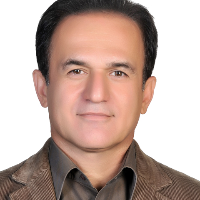Evaluating Scale Effect of Maps Derived via Remote Sensing and Ground Surveying on the Performance of HEC-HMS
Author(s):
Article Type:
Research/Original Article (دارای رتبه معتبر)
Abstract:
Rainfall Runoff modeling especially in ungauged watersheds is almost dependent on hydro-geomorphologic data. In this regard, the effects of data and DEM resolution on deriving watersheds geomorphologic data such as subbasins area, channels and subbasins slope should be well realized in modeling. In this research, HEC-HMS as the rainfall runoff model and two subbasins with different areas, geomorphologic properties and climate were selected for studying. By reducing the cell size of the DEM derived from a topo map, simulated peaks increased. For DEM cell sizes less than 100 m, the differences in simulated peak were limited to 2 to 5%. Using SRTM DEMs against the topo DEM at the scale of 1:25000, representing the effects of data resolution in rainfall runoff modeling, led to obtaining higher flood peaks at the two watersheds. Such an outcome was obtained for time to peak, hydrograph base time, and the slope of hydrograph rising limb. Change of SRTM DEM resolution affected the model output more than the case of using topo DEM. Decreasing DEMs resolution by decreasing information content of the topo DEM reduced differences in the model output when using two different sources of DEM. Furthermore, it is concluded that the extent of scale effect in modeling could not be inferred by watershed size. It was illustrated that HEC-HMS application in a watershed of more diversity was more sensitive to data resolution. Using cell size of 100 m and less could guaranty the result of the HEC-HMS application regardless of DEM origin and size of watersheds. Rainfall Runoff modeling especially in ungauged watersheds is almost dependent on hydro-geomorphologic data. In this regard, the effects of data and DEM resolution on deriving watersheds geomorphologic data such as subbasins area, channels and subbasins slope should be well realized in modeling. In this research, HEC-HMS as the rainfall runoff model and two subbasins with different areas, geomorphologic properties and climate were selected for studying. By reducing the cell size of the DEM derived from a topo map, simulated peaks increased. For DEM cell sizes less than 100 m, the differences in simulated peak were limited to 2 to 5%. Using SRTM DEMs against the topo DEM at the scale of 1:25000, representing the effects of data resolution in rainfall runoff modeling, led to obtaining higher flood peaks at the two watersheds. Such an outcome was obtained for time to peak, hydrograph base time, and the slope of hydrograph rising limb. Change of SRTM DEM resolution affected the model output more than the case of using topo DEM. Decreasing DEMs resolution by decreasing information content of the topo DEM reduced differences in the model output when using two different sources of DEM. Furthermore, it is concluded that the extent of scale effect in modeling could not be inferred by watershed size. It was illustrated that HEC-HMS application in a watershed of more diversity was more sensitive to data resolution. Using cell size of 100 m and less could guaranty the result of the HEC-HMS application regardless of DEM origin and size of watersheds.
Keywords:
Language:
Persian
Published:
Quranic Knowledge Research, Volume:18 Issue: 1, 2018
Pages:
157 to 170
magiran.com/p1847471
دانلود و مطالعه متن این مقاله با یکی از روشهای زیر امکان پذیر است:
اشتراک شخصی
با عضویت و پرداخت آنلاین حق اشتراک یکساله به مبلغ 1,390,000ريال میتوانید 70 عنوان مطلب دانلود کنید!
اشتراک سازمانی
به کتابخانه دانشگاه یا محل کار خود پیشنهاد کنید تا اشتراک سازمانی این پایگاه را برای دسترسی نامحدود همه کاربران به متن مطالب تهیه نمایند!
توجه!
- حق عضویت دریافتی صرف حمایت از نشریات عضو و نگهداری، تکمیل و توسعه مگیران میشود.
- پرداخت حق اشتراک و دانلود مقالات اجازه بازنشر آن در سایر رسانههای چاپی و دیجیتال را به کاربر نمیدهد.
In order to view content subscription is required
Personal subscription
Subscribe magiran.com for 70 € euros via PayPal and download 70 articles during a year.
Organization subscription
Please contact us to subscribe your university or library for unlimited access!


